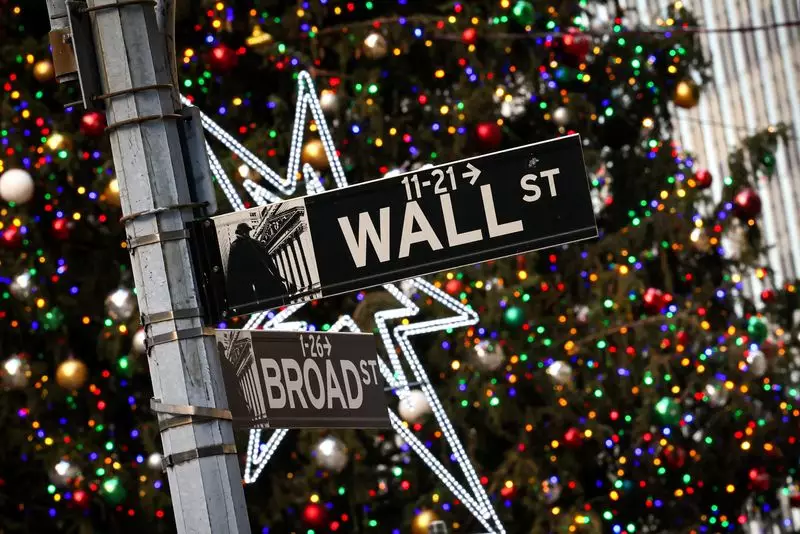On a bustling Tuesday just before Christmas, the primary indexes on Wall Street showed positive momentum, driven largely by a selection of megacap stocks. With traders frequently reducing their engagements during the holiday season, volumes dropped, accentuating the impact of leading stocks on overall market performance. The significant shifts in trading patterns were indicative not only of seasonal trading behaviors but also of underlying investor sentiment regarding broader economic factors.
The holiday season typically sees a slowdown in market activity, but the presence of megacap stocks, dubbed the “Magnificent Seven,” kept the trading environment relatively vibrant. Tesla’s impressive 5.1% increase was particularly noteworthy, showcasing its ability to influence the Consumer Discretionary sector, which surged 1.9%. The performance of such high-profile stocks can drastically sway market indices, highlighting their importance in the present financial landscape.
The technology and consumer sectors emerged as key players, with chip manufacturers such as Broadcom and Nvidia posting gains of 3% and 1.1%. Notably, Arm Holdings also saw a significant rise of 3.9%, attempting to recover from prior losses stemming from recent court rulings. This rebounding of tech stocks illustrates the volatile nature of these high-growth sectors, which react sharply to both legal outcomes and market news.
With the stock market preparing for an early closing and subsequent closure on Christmas Day, many investors are weighing their positions. The S&P 500 moved up by 41.80 points, translating to a 0.70% increase, while the Nasdaq Composite gained 197.63 points (1.00%). The Dow Jones Industrial Average also registered a healthy rise of 173.43 points (0.40%).
Market analysts, including CFRA Research’s chief investment strategist Sam Stovall, noted a general sense of optimism, particularly following the recent Federal Reserve decisions that alleviated some inflation concerns. The adaptation of monetary policy, characterized by a reduction in borrowing costs, has been a significant catalyst for current market dynamics. However, there remains a cautious outlook regarding inflation pressures that might arise from potential pro-business policies anticipated from the incoming administration.
As Wall Street navigates through the last stretch of the year, there’s a prevailing sentiment that the “Santa Claus rally,” historically marked by stock increases during the final days of December, may not hold as strong in the face of high valuations and investor apprehensions regarding the broader market’s sustainability.
Despite the festive trading atmosphere, keen observers are acutely aware of the mounting risks. Questions about whether U.S. stocks can continuously reach newer heights echo throughout the financial community. Factors such as elevated valuations and potential economic indicators that could impact market stability remain at the forefront of investors’ concerns.
One striking example from the trading day was the substantial leap of NeueHealth, which surged 69% after news broke of a $1.3 billion transaction that will take the healthcare provider private. This development underscores the volatility that specific sectors can experience based on corporate restructuring news.
Conversely, American Airlines faced setbacks as its shares dipped 0.4% after experiencing operational troubles that briefly grounded flights nationwide. Such incidents highlight the unpredictable nature of the market, where positive news for one company can quickly turn into negative sentiment for another.
The festive period on Wall Street long characterized by optimism does suggest some buoyancy, supported by technology stocks and favorable market movements. However, the interplay of economic policies, inflation forecasts, and individual company performances also paints a complex picture. As December progresses, stakeholders remain vigilant, poised to capitalize on opportunities while closely monitoring the undercurrents that could shape market trajectories in the year ahead. The combination of optimism and caution will likely dictate trading patterns as investors seek to maneuver through the holiday season.

